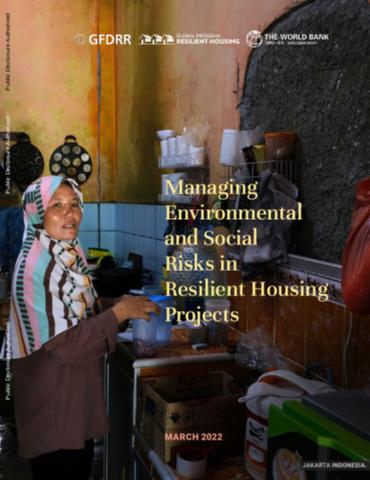Resilient Housing (RH) initiatives are a crucial means of improving access to safe and sanitary housing in urban areas of high vulnerability. These projects make residents safer, healthier, and more secure, and increase the economic inclusion of the world’s poorest populations. They upgrade homes, improve neighborhoods, and change lives. Like all investment projects, RH initiatives carry with them some risks and may impact the lives of community members in the project area. The note briefly introduces RH initiatives, describes their unique approach to project design, and touches on the possible risks occasioned by RH projects. It then explores the many ways in which RH initiatives closely align with the objectives and technical requirements embedded in the World Bank’s Environmental and Social Framework (ESF), which went into effect on October 1, 2018. The ESF lays out a comprehensive approach to identifying and managing environmental and social risks and minimizing potential impacts. The goals and requirements of RH initiatives and the ESF complement one another, and this note will describe how this mutually supportive relationship creates desirable outcomes that achieve the objectives of both, despite occasional trade-offs.
Managing Environmental and Social Risks in Resilient Housing Projects
March 1, 2022

